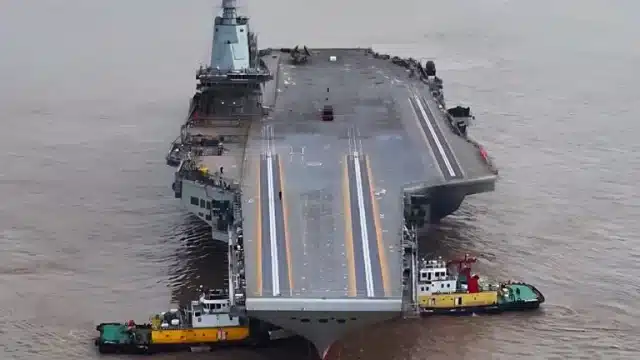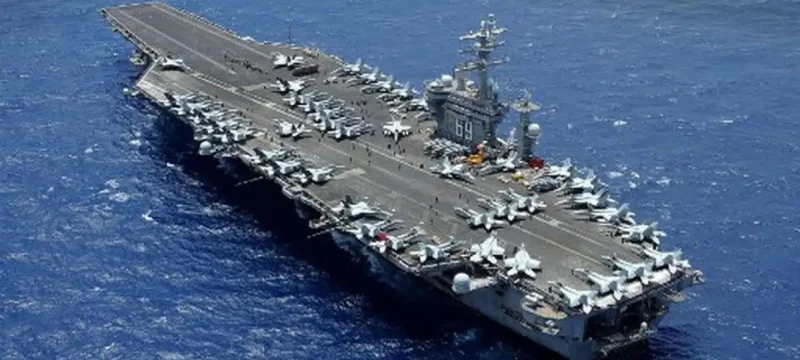Chinese state media has unveiled the latest images of China’s most advanced aircraft carrier, the Fujian, showcasing its next-generation launch tracks capable of catapulting a broader range of aircraft from its deck. Initially presented to the public in June 2022, the domestically designed and built Fujian is yet to undergo its first sea trials. Larger and more technologically advanced than its predecessors, the Shandong (commissioned in 2019) and the Liaoning (acquired second-hand from Ukraine in 1998), the Fujian is a notable achievement for China’s naval capabilities.
Late on Tuesday, state television featured footage of the Fujian being towed by a smaller vessel, revealing all three tracks of its electromagnetic catapult system on the deck. An officer from the Fujian, cited on state television, expressed determination to achieve combat readiness at the earliest in the new year. The carrier has undergone various tests, including mooring tests, with sea trials expected by 2023. In November, launch tests for its electromagnetic catapult system commenced, according to the state-controlled Chinese newspaper Global Times
Also Read: China Temporarily Reopens Khunjerab Pass For Trader Facilitation
Setting the Fujian apart from its counterparts like the Shandong and Liaoning, as well as rivaling the Ford-Class aircraft carriers of the US navy, is its status as the only aircraft carrier worldwide equipped with the latest Electro-magnetic Aircraft Launch System (EMALS). China’s version of EMALS not only accommodates a broader range of aircraft but is also more reliable and energy-efficient, representing a significant milestone in the modernization of the Chinese military.
President Xi Jinping has consistently emphasized the need for increased combat readiness and technological advancements leading up to the 100th anniversary of the founding of the People’s Liberation Army (PLA) in 2027. The development of advanced military capabilities, including the Fujian’s cutting-edge technology, aligns with these directives. Some senior US military officers have previously speculated that China might aim for a military takeover of Taiwan by 2027.

Amidst these developments, Taiwan has reported ongoing daily military activities by China in the Taiwan Strait and around the island ahead of its presidential and parliamentary elections on January 13. Chinese fighter jets have occasionally crossed the strait’s median line, an unofficial barrier previously recognized but now disavowed by Beijing. The situation adds complexity and tension to regional dynamics, underscoring the geopolitical significance of China’s advancements in naval technology and military capabilities.









